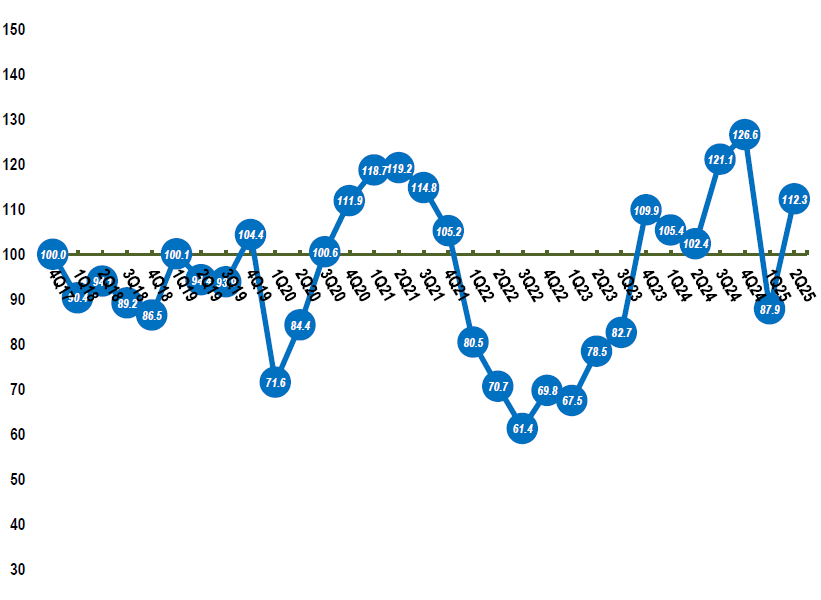Don’t Ignore Business Personal Property Taxes
Blas Ortiz and Andew Albright of Popp Hutcheson PLLC offer tips for decreasing liabilities.
For property tax purposes, commercial property owners concern themselves primarily with the administrative appeals and real estate taxes, while often ignoring corresponding business personal property. By doing so, those owners forfeit many tax-saving opportunities when complying with state filing requirements for and appealing taxes on business personal property. Since the majority of states tax business personal property in some form or fashion, commercial owners should follow several tax saving tips when preparing annual compliance filings.
Conduct the personal property test
Commercial property owners must realize that personal property tax savings begin during the compliance phase when formally rendering personal property value to the local assessor. This typically starts with what is reflected on the fixed asset list. In many states, taxable personal property represents anything that’s not real estate, is income-producing, and not considered intangible. Generally speaking, the primary test to determine whether an asset is personal property rests on the answer to the following question: If the asset were removed from the real estate, would the real estate be irreparably damaged? A yes answer means the asset would likely be real estate. Removing real estate line items becomes crucial. Otherwise it amounts to double taxation if an asset more appropriately characterized as real estate also gets taxed as personal property. Properly delineating each asset line item as personal property or real estate is a vital first step to lowering personal property taxes.
Classify assets properly
Taxpayers will find that proper asset classification holds another key to decreasing tax liability. Certain assets may be depreciated on shorter age-life schedules if described and classified properly when reported to the business personal property assessor. The North American Industry Classification System, along with various cost estimator and valuation services provide general classification and age-life guidance when finding acceptable depreciation schedules for a company’s fixed assets. A local property assessor or state department of revenue may also provide personal property classification and depreciation schedules, though it may not always be clear how that information was derived. If applicable, include potential obsolescence factors that may affect the final opinion of value. Many states periodically audit tangible personal property returns, so be prepared to explain any deviation from the assessor’s depreciation schedules and the inclusion of obsolescence or inutility factors.
Understand depreciation
Commercial owners must also keep in mind that the net book value of assets on a fixed asset list, although pertinent for accounting purposes, is not considered when calculating ad valorem property tax liability. Accounting guidelines allow for depreciating assets differently than property tax depreciation. For accounting purposes, an asset is usually depreciated at a set amount each year over the asset’s total typical life until it depreciates to $0. Those items often remain on the books even if the assets have been disposed of because they no longer have accounting value and, therefore, do not impact the overall book value.
However, for property tax purposes, assets are never fully depreciated to $0 value. Instead, they are depreciated to a residual value anywhere between 5 percent to 20 percent of the original cost. That being the case, when reporting assets, the preparer may look to the local assessors’ asset depreciation schedules to determine each asset’s depreciated value based on the asset’s current age. As a corollary to that, the preparer should also confirm whether any disposed or “ghost assets” remain on the books, and if so, remove them from the fixed asset list before rendering.
Consider intangibles
The removal of intangible property continues to be a fundamental step often overlooked when reviewing fixed asset ledgers for the purpose of filing self-reported personal property renditions and returns. In certain states, items such as software and warranties are nontaxable. While being mindful of each state’s specific guidelines for intangible property, consider embedded intangibles which might be identified within an asset’s total capitalized cost. Removing intangible personal property line items, in accordance with state and jurisdictional laws and guidelines, can preserve potential front-end tax savings for many years.
File properly and on-time
Knowing when to report is just as important as knowing how to report. To avoid late filing penalties, be aware of the filing requirements and methods for each specific jurisdiction, such as postmark and submission deadline rules. Be aware that many assessors and appraisal districts are shifting to electronic filing vs. traditional hard copy filing. Additionally, be certain to properly identify the property by identification number, owner name and address.
Business personal property should not be ignored when determining a company’s property tax liability. Following consistent and informed methodologies when filing tangible personal property compliance can create viable tax savings opportunities year after year.
Blas Ortiz is a director and Andrew Albright a manager at Popp Hutcheson PLLC, the Texas member of American Property Tax Counsel, the national affiliation of property tax attorneys. The firm focuses its practice on property tax disputes.








You must be logged in to post a comment.